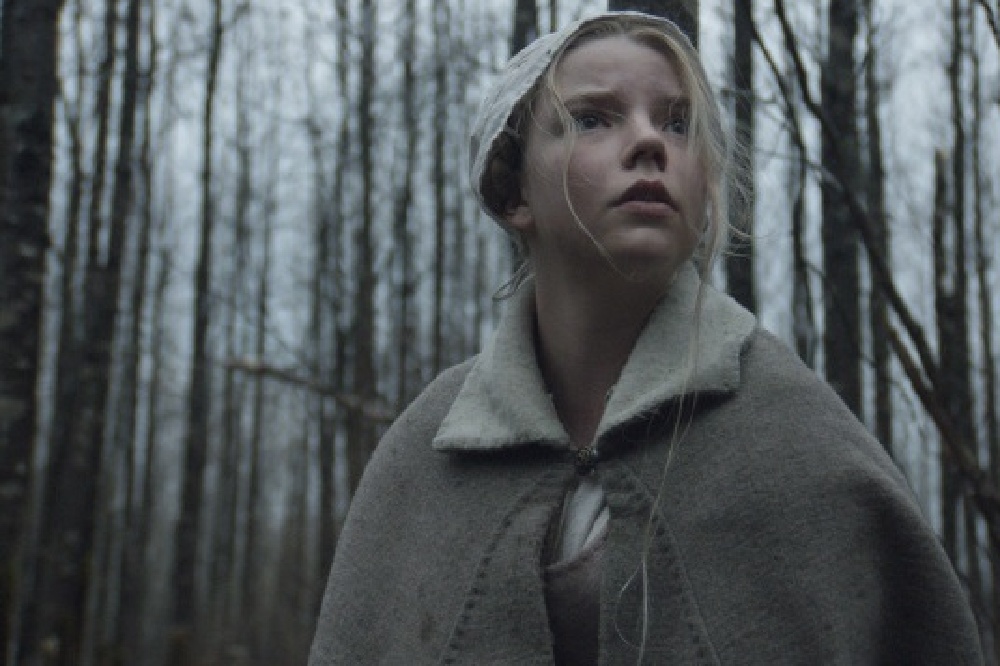Earlier this year, critics and audiences alike found themselves spellbound and stunned by 'New England folktale' The Witch, a film that follows one colonial family's terrifying unravelling at the hands of black magic and possession.

The Witch
Hailed as one of the most stand-out and subversive horror films in ages, the critical discourse surrounding director Robert Eggers' feature-length debut has focused on the multitude of ways in which the film can be interpreted, weaving through its treatment of religion and hysteria to an exploration of witchcraft in the colonial era.
But it is one reading in particular that has had viewers whispering: that The Witch might be a cunning probe into feminist thought, both historical and modern. To mark the film's digital, Blu-ray and DVD release this July, we take a look at how The Witch can be read as a feminist parable.
It's hard out here for a witch
Picture the scene; it's 1630s New England, a period ripe with puritanical fanaticism about religion and gender roles, as well as superstitions about the devil and sin. As a woman in this time, one only had the range to be a devout wife or a mother - dare to drift from these societal norms and you could be branded a witch, a scenario that history infamously played out in the horrific Salem witch trials.
When we first happen upon Thomasin (Anya Taylor-Joy) she is on the verge of womanhood, and her intensely religious Puritan family has been exiled to a remote farm on the edge of a menacing forest. Times are tough: crops die, hunting fails, and there are seven hungry mouths to feed. The family patriarch (Ralph Ineson) and Thomasin's mother (Kate Dickie) seem to quickly arrive at the conclusion that selling Thomasin, their eldest daughter, into marriage is the answer to their troubles.
The tension between Thomasin's pre-determined role and her burgeoning desire for independence is evident from the film's outset. She is repeatedly scolded for failing at her household chores and she also fails miserably at childminding, as her baby brother Sam disappears from right under her nose.
With her domestic prowess in question, we see Thomasin develop a fascination with life beyond the farm: looking beyond the square plot of land and square family values, she repeatedly gazes into the wild and forbidden woods, symbolic of a perilous, disorderly and evil path seldom travelled by good and innocent colonial daughters...
Red, white and You
As events fly ahead, the audience is confronted by vibrant symbolism that heightens The Witch's feminist undertones. The colour red - symbolic of lust, sexuality, and burgeoning womanhood - begins to bleed into the pale and bleak landscape of puritanical life, both metaphorically and literally. It is noteworthy that we see blood ominously appear, by the hand of coming-of-age Thomasin, in the milk of the goat she tends to. As the blood taints the family's pure white milk, it is as if a stain has been laid down on the chaste home the family has tried to create and enforce.
In later events, a red-cloaked witch, living deep in the woods in a secluded hovel, corrupts an innocent victim. It is monumental that this witch, a woman, seduces a male and that she lives a life of lust, in isolation, and fends for herself - the ultimate embodiment of feminine assertiveness and autonomy in an otherwise male-dominated society.
Even more so, it is an interesting development when juxtaposed against the first witch we met in the film, a naked, old and withered crone suffering the fate of a woman who has chosen to live outside societal norms and the family unit; it's as if our concept of witches is challenged as the film progresses.
As the film approaches its climax, the action moves further away from the farm and into those dark and dangerous woods, as Thomasin is drawn into increasingly dire circumstances.
Floating free
When everything metaphorically goes to hell, we see Thomasin reject her family and their plans for her in a powerful way. She has become the scapegoat for their dark problems yet refuses to fall in line with her gender-dictated destiny, doing whatever she can to save herself.
As she physically defends herself against their attacks, and then fights back, she symbolically assaults the traditional family unit and exorcises herself from society's gender expectations. This is particularly evident in the way she zealously disarms her mother, the epitome of the ideal Puritan woman. No spoilers here, but as Thomasin levitates beyond these norms at the end of the film, she is re-born as a woman and with an incredible power to determine her own path.
The Witch is a tremendously effective horror film on many levels; however, the greatest horror it serves up is the realization that the issues Thomasin faced are still being faced by young woman 400 years later. The challenges of Individuality, self-empowerment, and living outside societal gender norms as a woman remain as daunting a road as the path to a dark and ominous wood.
The Witch is coming to Blu-ray ™ and DVD on 18th July 2016, from Universal Pictures Home Entertainment.

